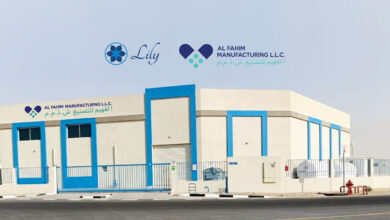
In early March, the WHO reported more than 110,000 cases of people infected with COVID-19 and a total of 3,831 deaths due to the infection outside of China. The prevalence of the disease has intensified mainly in European countries, the Eastern Mediterranean region and the large Asian states.
Hygienic prevention represents the most effective means of eliminating infections. Although the sources of many infections are the patients themselves, infections are often spread by touch, via the hands of healthcare personnel. The droplet route of transmission is less frequent but contact with infected sites is dangerous.


Focus on Hospital Beds
The hospital bed represents one of the sites of most frequent contact, not only by staff but also by the patients and visitors. Although the extent and spectrum of microbial contamination of a bed depends primarily on the character of the given institution, the valid anti-epidemic measures, and the thoroughness with which these are followed, the bed should provide favourable conditions for perfect and rapid disinfection. Logically, the highest risk of contamination of a bed involves areas frequently touched by the patient, staff or visitors as well as sites exposed to contaminating fluids (blood, urine, infusions).
“Infection Control has long been one of our priorities. Some of our technologies, for example, the lifting column unit, represent a fundamental step forward ” states Jitka Stranska, Managing Director of LINET MEA.
Innovations for Infection Control
The lifting mechanism of LINET columns involves smooth aluminium sections, the surface of which is adapted so as to absolutely minimise the adhesion of any impurities. The seals within the supporting columns prevent the seepage of fluids inside the columns and actuators. This construction also enables unlimited access to all parts and sections of the bed so they can be easily cleaned.
The bed’s height adjustment and the special examination position can be set by the foot control. This allows the nurse to control the bed settings without having to make physical contact with the most frequently touched areas of the bed with her hands. The smooth surfaces of the bed lack any joints and thus facilitate rapid decontamination and easy maintenance. The number of small parts used in the construction of LINET beds is kept to a minimum.

Surfaces that prevent the adhesion or growth of microorganisms represent a modern preventive measure that effectively prevents the spread of infection. LINET now offers a brand new innovation, antibacterial adaptation of the most frequently used plastic parts of the bed- the side rails and the bed ends. Technologically, this involves a unique admixture with antibacterial properties from the specialist Swiss company Sanitized®. This mixture contains active components including particles of silver, which prevent the adhesion and growth of bacteria. The efficacy of the Sanitized® antibacterial surfaces has been clinically tested and their effect has been confirmed especially against problematic, resistant microorganisms such as e.g. MRSA, VRE, and NDM-1.
Some hospitals prefer to decontaminate beds in special washers. Therefore, LINET Group has developed the Image 3 w bed, which is specially adapted for the extreme environment of washers with a reinforced cover and isolation of its electrical components.














